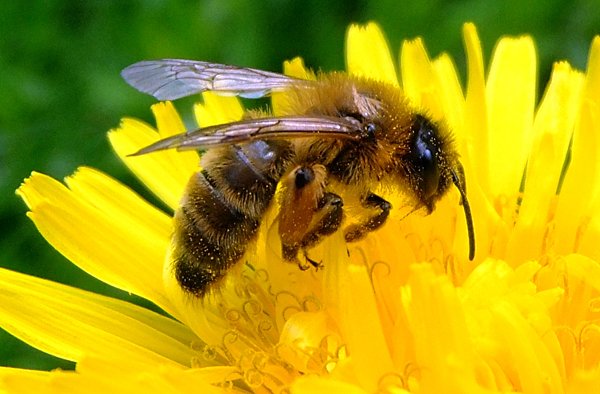A Western honey bee swarm

Eusociality
A Western honey bee swarm
Western honey bee nest in the trunk of a spruce
Further information: Eusociality
Bees may be solitary or may live in various types of communities. Eusociality appears to have originated from at least three independent
origins in halictid bees.[33] The most advanced of these are species with eusocial colonies; these are characterised by cooperative brood care and a division of labour into reproductive and non-reproductive adults, plus overlapping generations.[34] This division of labour creates specialized groups within eusocial societies which are called castes. In some species, groups of co
habiting females may be sisters, and if there is a division of labour within the group, they are considered semisocial. The group is called eusocial if, in addition, the group consists of a mother (the queen) and her daughters (workers). When the castes are purely
behavioural alternatives, with no morphological differentiation other than size, the system is considered primitively eusocial, as in many paper wasps; when the castes are morphologically discrete, the system is considered highly eusocial.[19]
True honey bees (genus Apis, of which seven species are currently recognized) are highly eusocial, and are among the best known insects. Their colonies are established by swarms, consisting of a queen and several hundred workers. There are 29 subspecies of one of
these species, Apis mellifera, native to Europe, the Middle East, and Africa. Africanized bees are a hybrid strain of A. mellifera that escaped from experiments involving crossing European and African subspecies; they are extremely defensive.[35]
